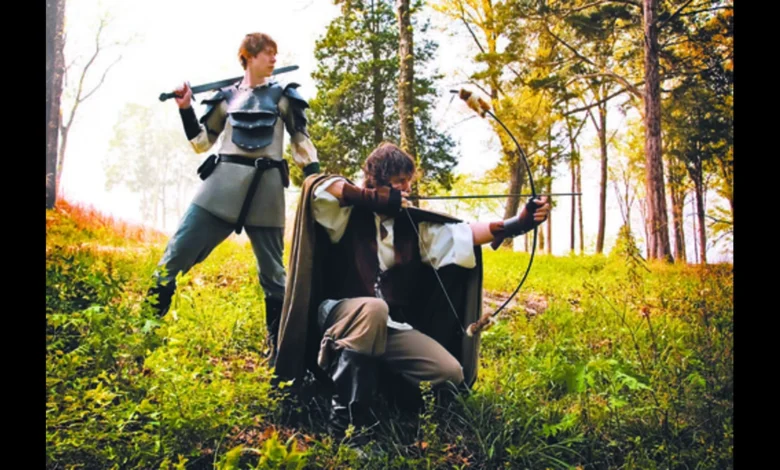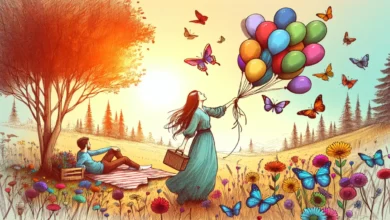The Fascinating History of Pointy Ears: From Folklore to Fantasy

Introduction to Pointy Ears
Pointy ears have captured our imaginations for centuries. These distinctive features, often associated with mythical beings and fantastical creatures, weave a rich tapestry of stories that echo through time. From mischievous elves to wise wizards, serve as a symbol of otherworldly charm and intrigue. But what lies behind this captivating trait? Is it mere folklore or something more profound? Join us as we explore the fascinating history of —tracing their origins in mythology, their evolution in art and literature, and their enduring legacy in pop culture today. Discover how these enchanting appendages have come to represent creativity and imagination across generations.
The Origins of Pointy Ears in Folklore and Mythology
Pointy ears have a rich tapestry woven into folklore and mythology across various cultures. Many ancient tales feature beings with elongated, tapering ears, often indicating their otherworldly nature or supernatural abilities.
In European myths, elves are the most recognizable characters sporting pointy ears. These enchanting creatures were believed to possess magical powers, granting them an ethereal allure that captivated human imagination.
Similarly, in Asian folklore, the iconic figure of the fox spirit, Huli Jing, embodies cunning and charm. Its distinctive pointed ears signify its connection to both earthly and celestial realms.
Indigenous stories worldwide also reference shape-shifting entities or spirits linked to nature. Their unique features often include sharp ear tips—symbols of heightened perception and understanding beyond mere human experience.
These early depictions laid the groundwork for how would evolve in art and literature throughout history. The fascination endures even today.
Pointy Ears in Art and Literature Throughout History
Pointy ears have long been a source of intrigue in art and literature. They often signify otherness, beauty, or charisma. Throughout history, artists have used this feature to create characters that defy the ordinary.
In medieval manuscripts, elves and fairies were depicted with elegantly elongated ears. These illustrations fueled imaginations and brought folklore to life on parchment.
The Romantic era saw an explosion of literary figures with pointy ears. Characters like the mischievous Puck from Shakespeare’s “A Midsummer Night’s Dream” embodied whimsy and enchantment.
Fast forward to the 20th century, when authors like J.
R.
R. Tolkien immortalized elves in modern fantasy literature. His richly detailed world showcased how pointy ears became symbols of wisdom and grace.
Art continues to embrace this motif today, blending traditional techniques with contemporary styles, ensuring that remain a captivating element across various creative expressions.
The Evolution of Pointy Ears in Pop Culture

Pointy ears have carved a unique niche in pop culture, transitioning from folklore to mainstream media. They first captured attention through classic tales, often representing magical beings or ethereal creatures.
With the rise of fantasy genres in the late 20th century, these iconic features became synonymous with beloved characters like elves and fairies. Movies such as “The Lord of the Rings” showcased them prominently, blending beauty with otherworldly charm.
Television also embraced pointy ears. Characters like Spock from “Star Trek” introduced fans to Vulcans and their logical yet whimsical existence. This shift solidified as a trademark for intelligent beings across various narratives.
In video games, they are vital identifiers for races such as Night Elves and High Elves, enhancing immersive worlds filled with adventure and magic. Their presence has evolved but remains a staple in defining fantastical realms that spark imagination and wonder among audiences today.
The Role of Pointy Ears in Fantasy and Science Fiction
Pointy ears have become iconic in fantasy and science fiction. They are often associated with ethereal beings like elves, fairies, and aliens. This distinctive feature distinguishes these characters from humans and signals their otherworldly nature.
In literature and film, pointy ears enhance a character’s charisma. Elves, with their elegant features, represent gracefulness and wisdom. Their pointed ears embody a connection to nature that resonates deeply in many narratives.
Science fiction also embraces this trait. Alien species frequently showcase exaggerated or uniquely shaped ears to emphasize their differences from humanity. serve as visual cues for audiences to recognize non-human characteristics instantly.
This physical characteristic allows creators to explore themes of identity and belonging. Characters with pointy ears often face prejudice or misunderstanding but ultimately reveal more profound truths about themselves through their journeys.
Controversies Surrounding the Use of Pointy Ears in Media
Pointy ears have sparked discussions in various creative circles. While often associated with fantasy races, they can perpetuate stereotypes. Elves and other mythical beings are considered noble or wise, creating a narrow view of diverse cultures.
Some critics argue that this portrayal marginalizes real-life groups that may share these features. The representation becomes problematic when it hints at exoticism or otherness, which can lead to misinterpretations about individuals who naturally possess pointy ears.
Additionally, the commercialization of pointy-eared characters raises questions about cultural appropriation. Companies sometimes profit from designs rooted in folklore without acknowledging their origins.
Fans also debate whether these depictions reinforce harmful tropes related to beauty and status. Such discussions challenge creators to reflect on their choices and consider the impact on audiences worldwide.
Conclusion: Pointy Ears as a Symbol of Imagination and Creativity
Pointy ears have captured our imagination across cultures and eras. They are more than just physical traits; they symbolize otherness, magic, and the unknown. From ancient folklore to modern fantasy narratives, represent beings that transcend ordinary existence.
These unique features invite us to explore realms beyond reality. Whether in literature or cinema, characters with often embody wisdom, strength, or mystery. They challenge societal norms about what is considered ‘normal’ and encourage creativity in storytelling.
Moreover, the versatility of pointy ears allows for endless interpretations. Artists can craft diverse representations that resonate with audiences on various emotional levels. This adaptability ensures their place not only in art but also in our collective cultural consciousness.
As we continue to enjoy stories filled with magical creatures and fantastical worlds, pointy ears will remain symbols of imagination—reminding us that there’s always more beneath the surface waiting to be discovered.





